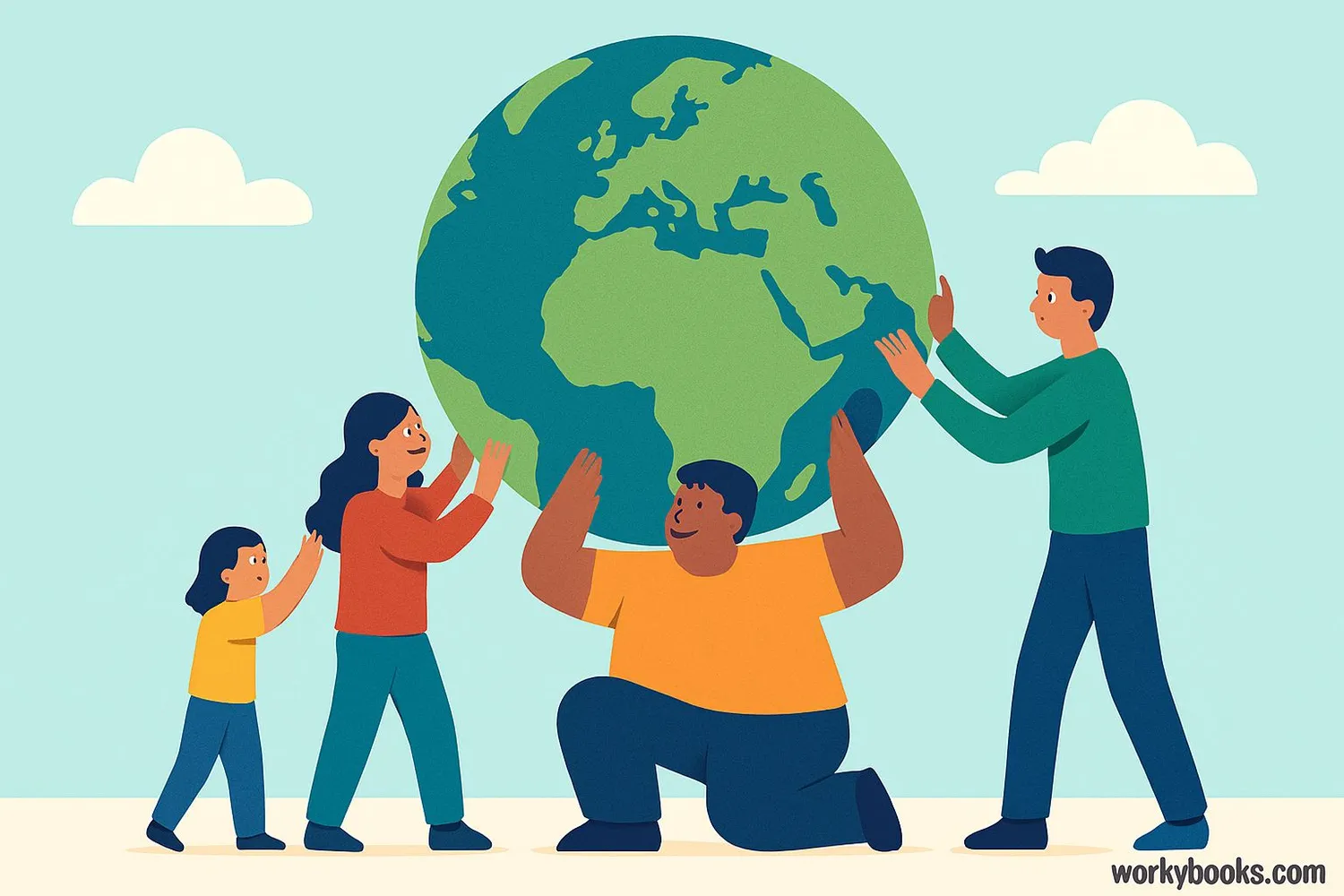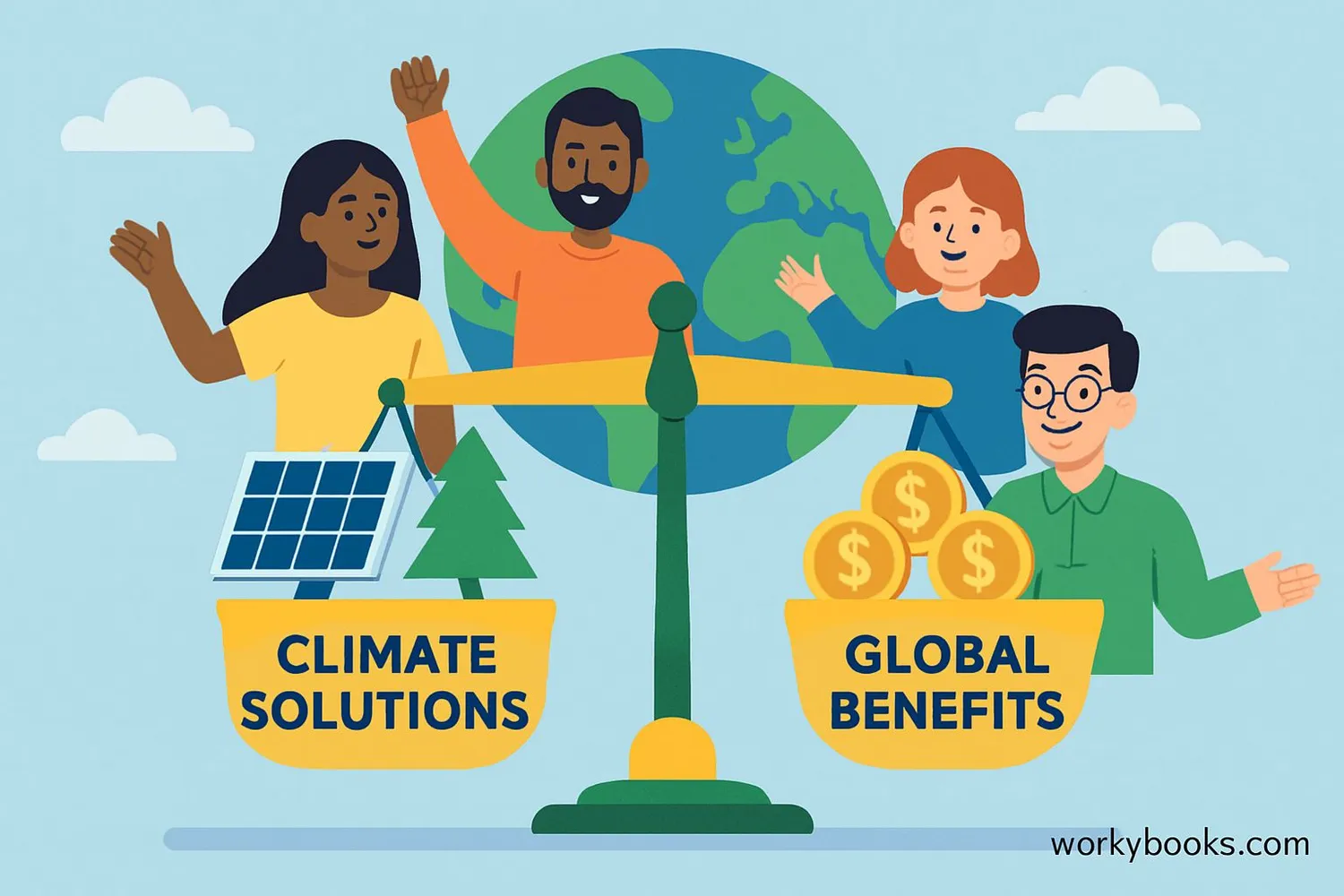Common but Differentiated Responsibilities - Definition, Examples, Quiz, FAQ, Trivia
Learn how countries work together fairly to protect our planet
What is CBDR?

CBDR stands for Common but Differentiated Responsibilities. It's a principle that means:
• Common Responsibility: All countries share the responsibility to protect our planet
• Differentiated Responsibilities: Countries have different capabilities and responsibilities based on their history and resources
Think of it like cleaning up after a big party: Everyone helped make the mess, but the people who made the biggest mess and have the most cleaning supplies should do more of the work!
Climate Fact!
CBDR was first introduced at the Earth Summit in Rio de Janeiro in 1992 and is part of important agreements like the Paris Agreement.
How CBDR Works

CBDR recognizes that countries are different and should contribute differently to solving climate change:
Developed Countries
Provide financial support, technology transfer, and take stronger climate actions
Developing Countries
Focus on sustainable development while receiving support for climate actions
Historical Responsibility
Countries that emitted more greenhouse gases in the past have greater responsibility
Current Capabilities
Wealthier countries with more resources can do more to address climate change
The Paris Agreement (2015) builds on CBDR principles by asking all countries to set climate goals, but with different expectations based on their circumstances.
Climate Justice!
CBDR helps ensure that the countries and people who contributed least to climate change aren't burdened with solving it alone.
Why CBDR Matters

CBDR is important because it creates a fair system for global climate action:
Climate Justice
Ensures vulnerable countries aren't unfairly burdened
Global Cooperation
Encourages all countries to participate in solutions
Sustainable Development
Helps developing countries grow cleanly
Without CBDR, global climate agreements might not be fair or effective:
• Developing countries might not have resources to address climate change
• Wealthy countries might not take sufficient responsibility
• Global cooperation would be more difficult
• Vulnerable communities would suffer most
CBDR helps create a world where all countries work together according to their abilities to protect our shared planet!
CBDR Quiz
Test your understanding of CBDR with this quiz! Answer all 5 questions to see how much you've learned.
Frequently Asked Questions
Here are answers to some common questions about CBDR:
Fun CBDR Trivia
Discover some interesting facts about CBDR and climate action:
Historical Origins
The CBDR principle was officially recognized at the 1992 Earth Summit in Rio de Janeiro, where 172 governments participated, including 108 heads of state.
Global Agreement
The Paris Agreement (2015) was signed by 195 countries and builds on CBDR principles, allowing each nation to set its own climate goals based on its capabilities.
Climate Support
Developed countries have pledged to provide $100 billion annually to help developing countries address climate change through the Green Climate Fund.
Unequal Impact
The 50 least developed countries account for less than 1% of global greenhouse gas emissions, yet they suffer the most severe impacts of climate change.





